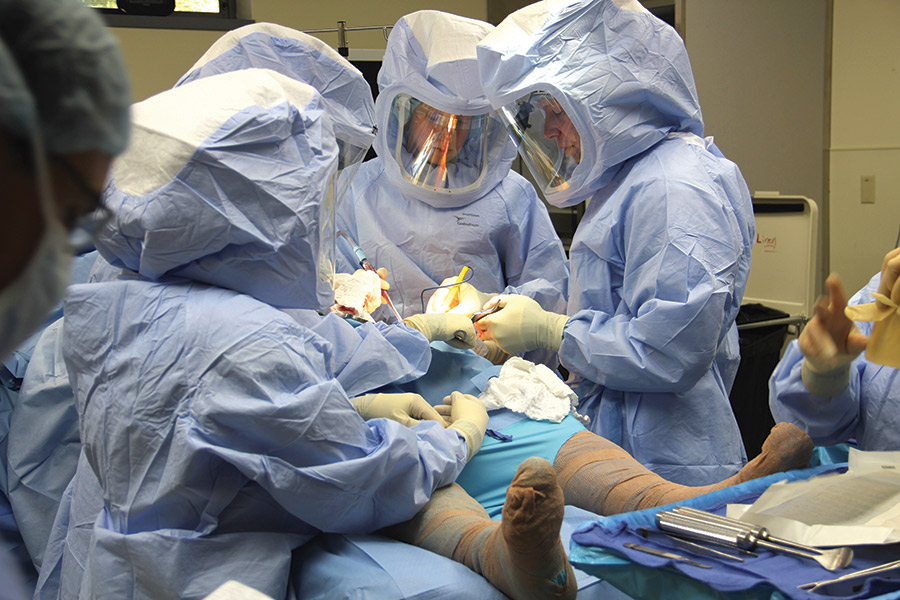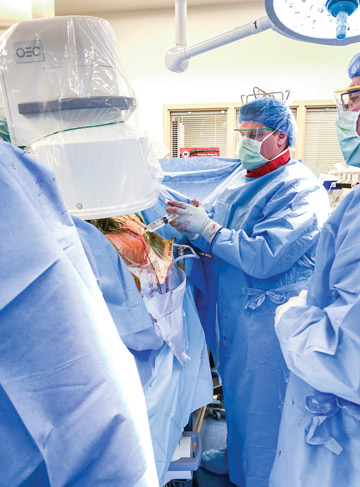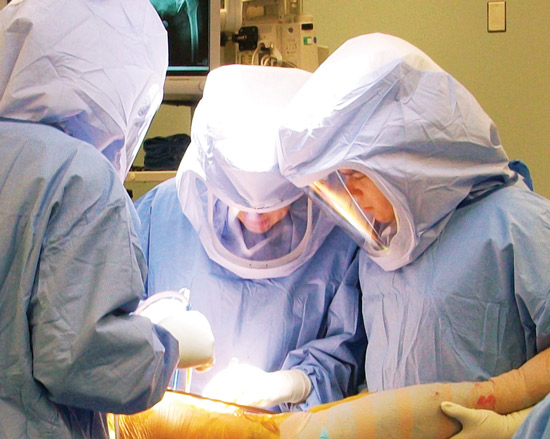Ask a dozen orthopedic surgeons if they prefer to enter the hip from the front or back during joint replacement procedures and you might get a dozen different answers. The posterior and direct anterior approaches have been researched, rehashed and reexamined by docs who view the issue (and joint) from opposite sides. It shouldn't be surprising that they have trouble reaching a consensus when both techniques have inherent advantages and disadvantages.
• Posterior approach. The incision is made on the side of the hip, above the greater trochanter of the femur, and the dissection goes behind the abductor muscles. "As a result, patients usually recover with no risk for long-term abductor
dysfunction or chronic limping," says Daniel Pincus, BA&Sc, MD, PhD, FRCSC, a joint replacement specialist and an assistant professor at the University of Toronto Sunnybrook Holland Orthopaedic Centre. "The posterior approach is also the
most extensile, making it the primary option for revision surgery."
Joshua C. Rozell, MD, a hip and knee reconstruction specialist at NYU Langone Orthopedic Center in New York City and NYU Langone Ambulatory Care Bay Ridge in Queens, notes dissection achieved through the posterior approach is generally
easier to perform because the hip is more accessible from the back than it is from the front. "Surgeons achieve easy extensibility of the incision and greater exposure for better access to the implant's femoral stems," he explains.
Disadvantages of the posterior approach include higher rates of post-op joint instability and slower recoveries than the anterior approach. Intra-
operative dislocations used to be fairly common during posterior hip replacements, according to Dr. Pincus, but he says improved surgical technique (repair of the posterior capsule) and technology (implants with large diameter bearing surfaces) have lowered rates to levels on par with the anterior approach.
Advantages of the posterior approach include less blood loss, faster surgical times and less anesthesia prep time. Additionally, the technique does not require fluoroscopy or a specialized hip table, points out R. Michael Meneghini, MD, director of the Indiana University Health Hip and Knee Center and professor of clinical orthopedic surgery at Indiana University School of Medicine in Indianapolis. "I believe that's why we might see a resurgence in its use, especially in the surgery center setting," says Dr. Meneghini.
.svg?sfvrsn=be606e78_3)



.svg?sfvrsn=56b2f850_5)